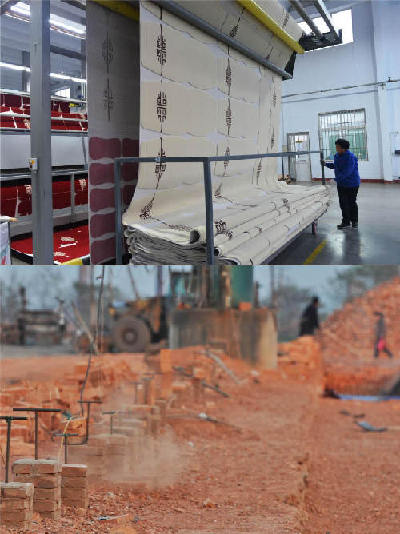By staff reporter LI YUAN
Economic Transformation through Industrial Restructuring
ON the morning of November 24, 2013, the Hebei provincial government took action to demolish 10 shaft furnaces and 16 converters at eight steel and iron plants in Tangshan, Handan and Chengde, reducing the overcapacity of iron production by 4.56 million tons and steel production by 6.8 million tons. Prior to this, by the end of October 2013, the province had cut down on steel and iron overcapacity by 2.38 million tons.
Steel and iron has long been a pillar industry for the Chinese economy; however, it has become common practice to cut down overcapacity of the industry. The government work report released at the First Session of the 12th National People’s Congress explicitly stated that efforts should be made to promote the transformation of the nation’s economic growth mode and accelerate industrial restructuring. Structural adjustment to the steel and iron industry now epitomizes China’s wider economic transformation.
Upgrading Chinese Economy
Since reform and opening-up, China’s GDP has seen an average annual growth of 9.8 percent, with the economic aggregate expanding more than 24-fold. In the past six years, China has contributed as much as 33 percent to the world’s economic growth, creating a “China miracle” that continues to astound the world.
Alongside the stable and relatively fast development of China’s economy, its ranking in world economy has continued to climb; however, problems entailed in the imbalance, incoordination and unsustainability of its economic development have become increasingly obvious. The outbreak of the global financial crisis made the central authorities aware that continuing along an economic growth path that relied on external demand, lacked innovation and featured high input and low output was no longer an option. The need for China to transform its economic growth mode has become more pressing.
Robert Lawrence Kuhn, China expert and author of How China’s Leaders Think: The Inside Story of China’s 30-Year Reform and What It Means for the Future of the World, maintains that China has no choice but to transform its economic growth mode, as it is the only way for the country to sustain economic development, improve people’s livelihood, achieve trade balance, save energy and protect the environment.

A textile mill equipped with state-of-the-art machinery (upper) that was constructed on the site of a small brick and tile factory (lower) in Linchi Town, Zouping County, Shandong Province.
